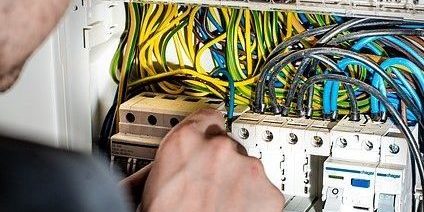We get a lot of questions from our friends in the Perth construction industry about testing and tagging. We are always happy to help out and offer expert advice when we can.
We’re right in the middle of the September-November quarter, so now is the time to make sure your electrical tags are up to date. Importantly, tagging can only be done by a licensed electrician or competent person after the device has been visually inspected and tested.
Why is electrical tagging important?
Regular electrical testing and tagging is the law on building and demolition sites (including mine sites, factories, and renovation sites). With so much electrical machinery operating one dodgy wire or a piece of equipment drawing too much power can have catastrophic results. Keeping a building site safe requires a professional to test and tag in line with Australian Standards (AS/NZS 3012:2010).
What is the law for testing and tagging?
The subject is covered by AS/NZS 3012:2010, the Occupational Health and Safety Act 1984, and Occupational Health and Safety Regulations 1996. As you can see it’s serious business and not something that should be taken lightly. Non-compliance carries hefty fines so tagging should always be carried out by a professional.
How often do I need to test and tag?
There are different requirements for different work areas. It’s important to remember the frequency depends on the environment the equipment is used in, not the type of equipment. As a general guideline (according to the WA Department of Commerce and AS/NZS 3012:2010), this is how often equipment should be tested on construction sites:
- Transportable structures and equipment, construction wiring, and switchboards must be tagged every 6 months
- Portable equipment (smaller appliances, flexible cords, generators, inverters) must be tested every 3 months
- Portable RCDs (including RCDs on portable equipment and devices) must be push-button tested and visually inspected daily and must be professionally tested every 3 months
- Non-portable fixed RCDs must be tested monthly and professionally tested once a year
- After inspecting or testing portable electrical equipment or an RCD used on a construction or demolition site, the item must be tagged
- Workers who bring portable electrical equipment or an RCD to a construction or demolition site operation must ensure the attached tag is current and bears the name of the competent person who conducted the test, and the test or re-test date
In other work areas like offices the requirements are to have a risk management plan which determines the type of inspection and whether any testing is required. Most offices will test and tag computers and plugged-in equipment regularly (every 6 to 12 months) to make sure it is safe for workers.
For more detailed information in specific situations, follow these links:
- AS/NZS 3012:2010
- Department of Commerce (WorkSafe) Guide to testing and tagging portable electrical equipment and residual current devices at workplaces
What do the colours mean?
You might see a range of colours on tags. In construction areas, mine sites, on building materials and in demolition zones there are specific colours required in certain months. The tagging year moves in quarters:
- December to February has a red tag
- March to May has a green tag
- June to August has a blue tag
- September to November has a yellow tag
For other industries the tagger can choose theirs colours. Most people choose a standard colour and rotate it to a new colour with each test. That was you can visually identify when the appliance was last tested and know straight away if it needs re-testing.
At Western Corp Hardware we are always on hand to help, to see the wide range of supplies we offer check out our services today.







